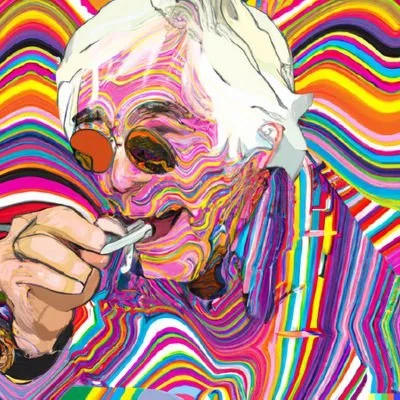In the backstage videos of music videos, you can see that camera operators are filming with small video cameras.
In the backstage scenes of TV shows, you can see that cameramen are filming with large cameras that they carry on their shoulder (or mounted on a tripod).
Comparing the quality of music videos and recordings of various shows posted on YouTube by TV channels, I do not find any difference.
It seems that small video cameras shoot just as well as large video cameras.
What is the difference?
It’s mainly the lens size. It has a wide zoom range with a servo rocker (zoom buttons) and can par focal* (focus at one zoom range and stay the same focus when zoomed out)
Then it’s a massive battery on the back and an audio kit strapped on the side. Then sometimes streaming device to live broadcast. Then you got a shoulder pad on the bottom and a big viewfinder for daylight shooting. Strip all that away the body isn’t as big and heavy as you think. So largely all operational to be used running around without needing to stop and change gear.
A few reasons, lenses are one, output options and durability are others. Many DSLRs and mirrorless cameras used for YouTube and low budget documentary don’t have the ability to output live video to a vision mixer or don’t do it in a way secure enough or high quality enough for live broadcast.
Though you might be watching both productions in 60fps 1080p, TV and film directors and editors work with higher res and/or higher fps in the studio. This allows them more options, if they want to zoom in farther, slow the shot down, etc. Then they’ll just export down to whatever standard format.
Whatever res and fps the small camera has, the big camera can do more.
Furthermore, whatever company is doing the shoot will use their best camera for whichever project. If they have one of each, they’ll often have the smaller camera capturing the same events from a second angle, or getting behind-the-scenes footage. I’ve been that BTS guy holding the smaller camera. For BTS, the lightness of the smaller camera makes it easier to catch unexpected BTS content, if you have to swivel around or zoom in on the fly, for example. No one cares if BTS footage is shaky.
Personally I think the shakynes adds a lot to the BTS footage. It makes it really feel like BTS when the cameraman needs to spin around and move to capture something unexpected. Compared to “Oh something unexpected, just so happens to take place just in front of this conveniently placed camera, that is just on filming a random wall, how lucky”
Judging by the YouTube quality isn’t a good way because they’re probably all encoded at the same rate.
Like most things technical, you tend to compromise quality for mobility
Here’s a video on TV production cameras https://youtube.com/watch?v=rYafZeiIFwA
Operation is different.
A professional camera operator isn’t going to use sub menus on a touch screen to set the white balance or focus or whatever. Especially when a retake isn’t possible.
This video answers your exact question: https://youtu.be/RkTaMyatsTo?si=1JaqDosk-5Xuu1y1 It just seems to be a very flexible option where you can record stuff that is very close or very far away.
A shoulder mounted camera with lots of mass is easier to get stable footage from, it doesn’t wobble around like a small handheld
Comparing the quality of music videos and recordings of various shows posted on YouTube by TV channels, I do not find any difference.
Maybe for you, but I generally can.
Bigger cameras have bigger sensors. This means they can process more light, amcan get more detail, and have less noise.
The gaps between large triple ccds and smaller single ccds has certainly shrunk. But if a professional has to get the best possible result in all sorts of environments while not wasting time/money, buying a proper camera that isn’t going to need as much post processing, or as many lights (especially with multiple subjects) is going to be a huge timesaver.
Kinda like photographers with a DSLR Vs an iPhone. The difference has become less, but a DSLR is going to kick an iPhones ass every time.Next up is the lenses.
If you have a small lens with a defect, more of the picture is going to travel through that defect.
If you have a large lens with a defect, a smaller amount of the picture is going to travel through that defect.
Also, lenses generally have more abberations towards the outside of the lense (like barrelling or chromatic aberration). If you can only process light from the middle of the lens, the picture is going to be so much better.
So you make big lenses, and only use the but in the middle of them.Finally it’s things like other features.
From encoding format, framerate & resolution, outputs (clean feeds, native sdi or SMPTE fibre, remote CCUs, return feeds, coms), genlock and timecode syncs. Even to things how the viewfinders, zoom and focus controls work.And by the time you are making a $100k camera with $250k lenses, it’s kinda a thing that works for sports, film, TV, whatever. There is a lot of overlap of features, and nobody wants to buy the same lens for 2 different cameras because the cameras are slightly different.
A friend of mine who went to film school said that the primary technique in film is that you put the camera as far away as possible and simply use the zoom to frame the shot you want. These cameras have a wide field of view and a powerful zoom allowing them to be much further away from the scene and still have it be in focus, framed and with a good resolution.
They may also be using larger cassette tapes to hold more video than your average home recording device. Afaik, they still often record to some kind of physical media for storage purposes, and these big ass cameras aren’t storing the film digitally thus they have to be big enough to hold the tape/film.
It’s all digital these days, pro cameras have hot swappable ssd drives so you can record to 2 drives at once for backup, or record endlessly
Well, not all digital but predominantly
Yea, that’s not right, at least not in modern film. The distance to the subject and thus the resulting focal length needed to get proper framing drastically impacts the look. Every (or at least most of them) Cinematographer and Director has their own preferences.
For example, Emmanuel Lubezki, the Director of Photography for films like The Revenant, Children of Men and Birdman prefers the use of very short lenses thus he has to get close to the subject while Ridley Scott as Director prefers the use of longer lenses in his films, moving the camera further away.
And all that has nothing in the slightest to do with focus or zoom. The opposite, motion picture cameras usually do not use zoom lenses but fixed focal (prime) lenses and tape, too was rarely ever used in motion picture production. Today they usually use various types of flash media (like SSDs or CFast cards) or, if they feel fancy, still analogue film.
In TV (live) production, that’s a little different. Tape or other magnetic storage media were used for a long time up into the HD era. Nowadays, SSD or SD recording is used just as well. Also, TV cameras are indeed usually outfitted with powerful zoom lenses since the convenience of fast zoom tops the image quality of prime lenses, especially in live settings. (You can’t just swap lenses when every second counts). But even then, going as far away as possible isn’t usually what’s done. It always depends on the circumstances, the location and the needs of the shoot.
Modern TV and motion picture cameras are large for a number of other reasons. They support a whole lot more features than a good video capable mirrorless photo camera (like a Sony A7 IV) like multiple video outputs in industry standards (SDI, not HDMI), larger batteries, hotswappable redundant storage, mounting points for additional equipment, microphone ports, support for more video codecs and higher data rates, higher resolution, etc. And of course, a whole bunch of cooling for prolonged use without any hitches or glitches.
Here’s a good explainer. It’s a bit out of date but still largely true I think. The camera part of a TV camera is often the least expensive component
I’d imagine that zoom length is a massive factor. I could be wrong but usually cameras in something like a news studio are reasonably far away from the host. It might not seem like much at scale but it’s probably a more considerable distance than even putting a camera on the other side of the room in your home. It also explains why, from a perspective standpoint, a headshot of a host on cable news will always looks different than, say, the headshot of a Twitch stream (Twitch streamers tend to use far smaller cameras that are way closer to their faces).
music video
TV shows
Back in the days, we had a saying:
If it’s on a couch, it is youtube, if it’s on a stage, it is TV.




